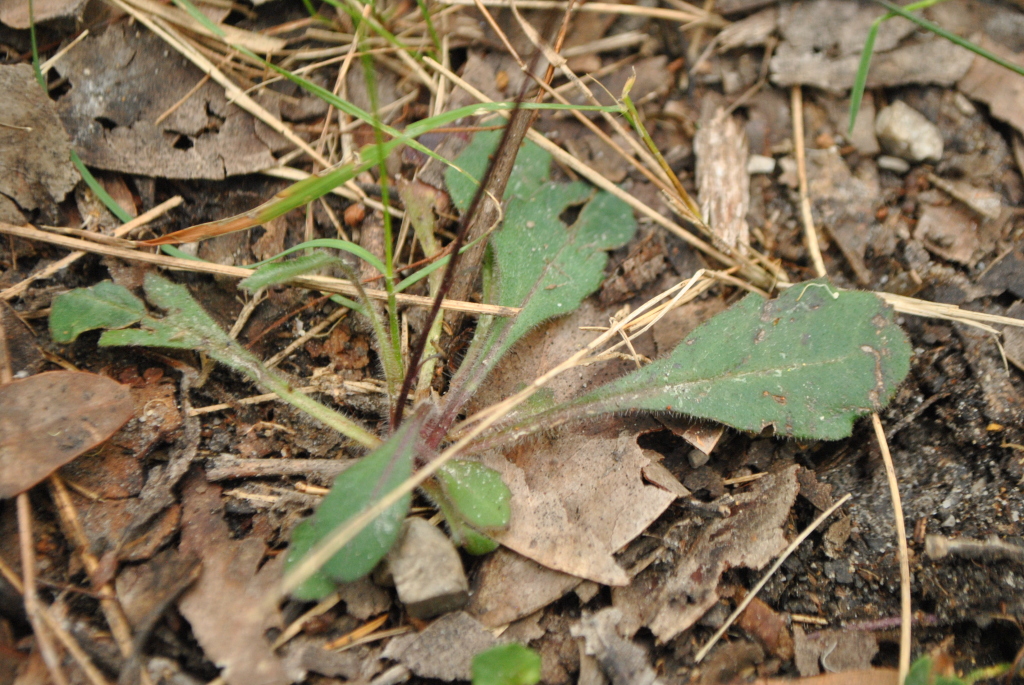Lagenophora sublyrata
(Cass.) A.R.Bean & Jian Wang ter Slender Bottle-daisyRoots thick, somewhat tuberous, tufted from a short vertical rhizome. Leaves mostly 15–80 mm long and 10–15(–20) mm wide, obtuse to sub-acute, sparsely to quite densely hirsute, sometimes tinged purple, margins usually sinuate-dentate with 3–5 pairs of teeth or rounded lobes. Scape slender, (4–)7–19 cm long at anthesis, (4–)6–23(–31) cm long at fruiting stage, often darkly pigmented, glabrous except for short, more or less appressed hairs below capitulum; bracts several, lanceolate or oblanceolate, c. 2–4 mm long; capitulum (2.5–)4–5.4(–11) mm wide; involucral bracts 2–5, narrow oblong (or lanceolate), upper ones 1.3–1.7 x 0.2 mm wide, lower ones 3–5.5 x 0.5–0.8 mm or occasionally larger, apex broadly acute to obtuse. Ray florets 20–37(–72) in 2–5 rows, ligules 1.5–2.5(–3) mm long, white to pale mauve to purplish-blue; disc florets few, yellow. Disc florets (10–)30, light yellow. Cypselas obliquely oblanceolate, laterally compressed, 2.4–2.8(–3.3) mm long excluding beak, light brown to dark brown at maturity, with glands confined to dorsal side of beak and adjacent area of cypsela; cypsela beak to 0.4–0.6 mm long. Flowers spring and summer.
Wim, GleP, VVP, GipP, OtP, WaP, CVU, DunT, EGL, EGU, WPro, HSF, HNF, OtR, Strz, MonT, HFE, VAlp. Also SA, Qld, NSW, Tas. China, India, Sri Lanka, Thailand, Malesia (e.g. Java, Papua New Guinea), New Zealand. Widespread across southern Victoria mostly in moist forest and heathland of the plains and foothills but absent from most of the Volcanic Plain.
Globally, Lagenophora sublyrata is the most widespread species in the genus. It was previously treated as L. gracilis, which is now regarded as endemic to Western Australia.
Clarke, I.C. (1999). Lagenophora. In: Walsh, N.G.; Entwisle, T.J., Flora of Victoria Vol. 4, Cornaceae to Asteraceae, pp. 864–867. Inkata Press, Melbourne.
 Spinning
SpinningMisapplications
Wang, J.; Bean, A.R. (2019). A taxonomic revision of Lagenophora Cass. (Asteraceae) in Australia. Austrobaileya 10(3): 405–442.

